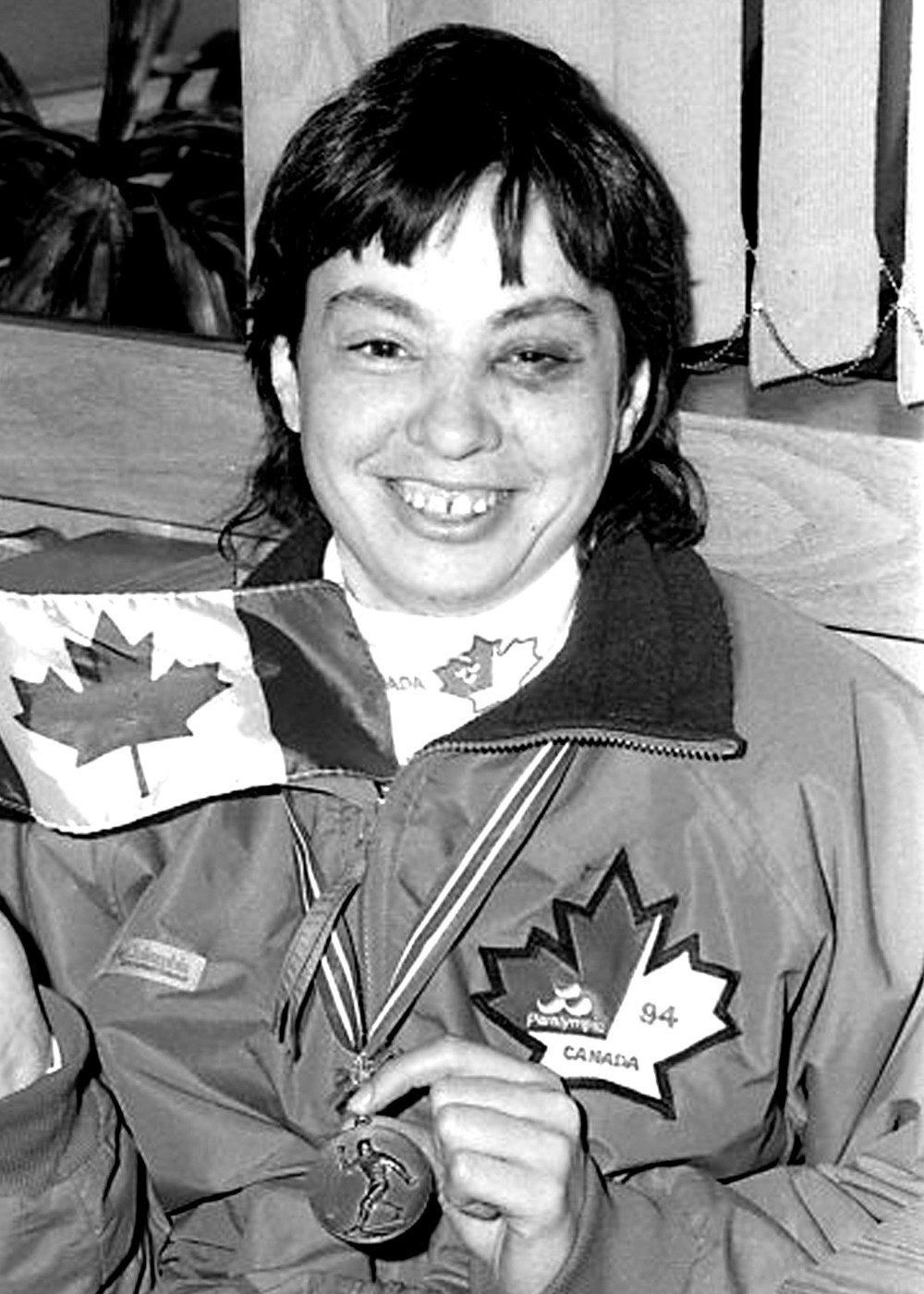SPORTS FLASHBACK 1994: Paralympic athlete wins bronze medal in Norway
Advertisement
Hey there, time traveller!
This article was published 17/09/2023 (643 days ago), so information in it may no longer be current.
With the bronze medal around her neck, Terry Lynn Johnson recalls her feelings when she crossed the finish line after completing her cross-country skiing event during the 1994 Paralympics in Lillehammer, Norway, earlier this month.
“I was very nervous and very excited,” she said.
“I was surprised when I finished the race, that none of the other skiers passed me.”

Johnson, 32, and her Manitoba teammate Brita Hall were the first to leave the starting chutes at the cross-country skiing competition near Lillehammer on the first day of the nine-day Paralympic Winter Games.
Shortly after beginning the five-kilometer, staggered-start women’s race, Johnson passed Hall. Skiers from Sweden and Finland eventually moved up in position behind Johnson.
After the competition, the athlete said she knew she had placed in the top ranks of the racers.
“ I knew I had won a medal when I looked up and saw it on the board.”
Johnson’s time of 20 minutes and 22.4 seconds earned her the bronze medal, while Sweden received the gold and Finland got silver.
“That day, my time was a lot faster than I had ever had before,” Johnson said.
Practice on the trails before the race provided a challenge, the athlete remembered, adding that the course involved more hills than she was used to in Winnipeg.
“It was challenging. I wasn’t sure if I’d fall off my skis or not, but I never did.”
However, Johnson said she wasn’t so lucky while practicing on an alternative trail.
“That course was hillier and the turns were wider, so you go down faster,” she explained. “If you hit a spot after those wide turns that’s a bit steeper, then you go faster and it’s hard to control.”
Johnson did flip over on her skis and got tangled up, but her coaches were ahead, so they didn’t see her fall, she said.
When Johnson wasn’t on the trails practicing, Johnson said she had time to check out some of the other Paralympic events, including skiing races with blind competitors.
They had a guide with them, who explained how to turn and where to go, she explained. “It was all very interesting to see the different sports. Imagine being blind and trying to ski downhill.”
Other events included “sit-skiing,” in which competitors who cannot use their legs race on one ski instead of two, and “sledge hockey”.
Johnson said she enjoyed meeting and exchanging pins with other athletes, but her most valuable memories lie in the competition and having the opportunity to see Norway itself.
“It’s beautiful,” she said. “I would have stayed there if I had a chance.”
“I’ll remember those mountains and their buildings. They were different from here.”
Johnson and her teammates Hall from Winnipeg and Wayne Bauche of Brandon arrived home Sunday. Canada sent a team of 31 athletes to the 1994 Paralympic Games.
The 1994 Games marked the second time the Paralympic Winter Games were held in the same location as the Winter Olympics and the first time the Games had the same organizing committee.
The Paralympics consisted of 133 events in five disciplines in four sports. Athletes in 10 different impairment categories competed in alpine skiing, ice sledge racing, cross country skiing and sledge hockey, which became an immediate crowd favorite, and was added to the program this year.
The Paralympic Games are organized in a similar way to the Olympic Games. The International Olympic Committee recognizes the Special Olympics World Games, which is for athletes with intellectual disabilities, Since 1992 Special Olympics athletes have also participated in the Paralympic Games.
Now that she’s back in Manitoba, Johnson has no intention of slowing down. This week she is heading to Thompson to play floor hockey in the Manitoba Special Olympics Winter Games.
Then the athlete will be working on her track and field skills in preparation for the Canadian Special Olympics Summer Games to be held in Halifax in July.
